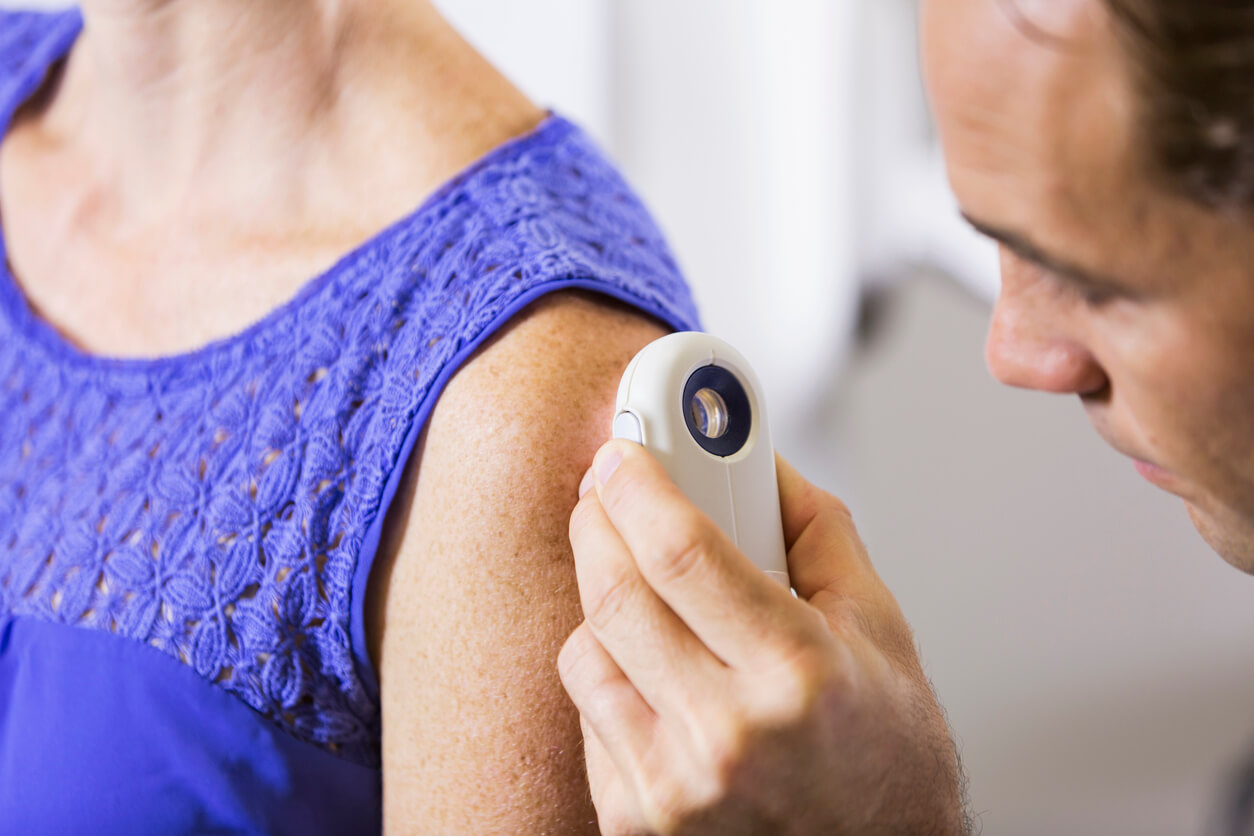If you have skin cancer, the odds are very high that your skin surgeon will suggest Mohs surgery – a surgery that is performed to effectively treat both common and rare forms of skin cancer. This treatment has the highest cure rate (99%) and the lowest recurrence rate of any type of skin cancer treatment.
If you’re planning on having Mohs surgery, there are several things that you will want to keep in mind. Let’s talk about the Mohs surgery procedure, how you can avoid the common dangers associated with Mohs surgery, and where you can go in the Greater Athens area for world-class dermatology and skin cancer treatment.
Mohs Surgery Procedure
Your Mohs surgery will be performed in your dermatologist’s office. For the procedure, the treatment area is first numbed with a local anesthetic, and a medical-grade ink is used to map the tumor.
During the procedure, a scalpel is used to remove thin, saucer-shaped layer(s) of your skin sequentially. After a layer is removed, the tissue is brought into an adjacent lab area for the dermatologist to assess the extent of the skin cancer and to identify the microscopic roots.
If tumor cells remain through the tissue, the surgeon will continue the procedure until your skin is free from cancer cells. Once the “bottom” of the cancer is found, and noncancerous cells are beneath it, no more layers need to be removed – the cancer is now gone.
Following the cancer removal, some wounds are allowed to heal on their own, while others require stitches to close the wound. If there is not enough skin to stretch to cover the wound, a skin graft (a piece of skin from another location of your body) will be used to cover the wound.
Post-Mohs Surgery Dangers
Generally, Mohs surgery is considered a safe procedure. However, as with any other surgical procedure, it also comes with risks – which may include:
- Bleeding
- Infection (indicated by redness, pus discharge, fever, etc.)
- Itching or shooting pain and tenderness at or around the surgical site
- Weakness in the treated area of your body (which can occur if the surgeon cut a muscle nerve during tumor removal)
- Scarring and discoloration at the surgical site
- Additional future repair if a surgical graft is used
Tips to Avoid Mohs Surgery Complications
Before sending you home following your Mohs surgery, your dermatologist will give you some instructions on how to clean your wound, keep it dry, and care for it so it heals quickly and properly.
Some tips your dermatologist will likely give you to care for your wound and prevent complications include:
- Keep your wound covered for 14 days, and change the dressing daily.
- Keep your wound clean and dry as directed to prevent infection.
- Apply the prescription topical medicine on the wound as advised to prevent infection and to allow the wound to heal without large scarring.
- Take your prescription (if given) or over-the-counter pain relievers, such as Tylenol, to mitigate pain and discomfort while you heal.
- Call your surgeon right away if you notice any signs of infection.
Mohs Surgery in Greater Athens, GA
The success of a Mohs surgery procedure largely depends on the skills, clinical acumen, and accurate microscopic interpretation of the tumor cells by the surgeon. So, make sure you are in good hands for your Mohs surgery.
At Georgia Skin Cancer & Aesthetic Dermatology, we have a highly trained, experienced, and board-certified Mohs surgeon Dr. Ross Campbell, who will help you win your battle against skin cancer.
To arrange an appointment with Dr. Campbell, contact us today at (706) 543-5858, or fill out our appointment request form now. We look forward to serving you!
